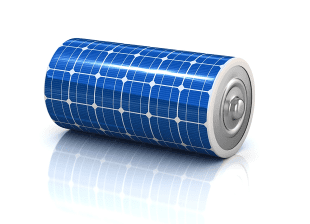 The Australian Renewable Energy Agency and the Victoria government are leading a new program to establish standards for household and commercial battery storage to make it easier for residential and business customers to compare different storage options.
The Australian Renewable Energy Agency and the Victoria government are leading a new program to establish standards for household and commercial battery storage to make it easier for residential and business customers to compare different storage options.
The Planned Australian Battery Performance Standard will be finance by ARENA and Victoria, but the consortium doing the work will be led by DNV GL – the world leader on certification – along with the Smart Energy Council, Deakin University and the CSIRO.
Australia is expected to lead the world on battery storage, as the more than 2 million homes and businesses that already have rooftop solar, and the millions more expect to install solar in the coming decade – look to battery storage to store excess output.
The take-up is going to be so significant that the Australian Energy Market Operator expects nearly half of all supply to come from “distribute energy” – including rooftop solar, battery storage and demand management – by 2040, if not earlier.
The problem with home and business customers is that while Standards Australia has introduced guidelines on safety and installation practices, there is still no way to compare different battery types.
“This work will be about performance,”ARENA CEO Ivor Frischknecht told RenewEconomy.
“So, if you are trying to figure out what to buy you will be able to look at a 10kWh battery from one brand and compare it with another brand – in terms of cycles, depth of discharge, and kilowatt through-put rating.”
Frischknecht said the problem arose because there was a “bazillion” other features on a battery – but they were measured different by different manufacturers.
“What we are trying to get is to enable consumers and buyers to compare apples to apples,” Frischknecht said.
“It’s like buying a car – you might look at power, emissions, asnd torque, but you know it is measured same way between BMW, Mercedes and Holden. There is currently no equivalent for batteries.”
The role of battery storage is expected to grow rapidly in Australia as the costs of battery storage continue their dramatic fall, as grid prices remain high, and as feed in tariffs paid to excess output continues to be trimmed.
Around 17,000 systems were installed in 2017, but this number is expected to surge in 2018, and could reach more than one million in the early 2020s
The CSIRO will focus on developing testing protocols, Deakin University will explore battery capacity estimation approaches, and the Smart Energy Council will provide an interface with local industry stakeholders.
DNV GL will prepare a draft proposal for the standard, drawing on its extensive experience with equivalent standards elsewhere in the world and the insights from its battery test laboratories in the US and Europe, and will then put this to Standards Australia.
This process is expected to take about two years.
“The difficulty for consumers to make a well-informed choice presents a barrier to uptake of battery storage,” Frischknecht said in a statement.
“This project will give consumers a more informed choice and increased confidence in deciding to invest in home batteries and rooftop solar.
ARENA is contributing $1.4 million for the project, while the Victoria State Government has provided $500,000 via its New Energy Job Fund.
Lucy Craig, vice-president, Technology & Innovation for Energy, at DNV GL said storage is a vital component in the transition to a greener energy future.
,We look forward to building on these efforts to create a vibrant and lasting energy storage market for Australia,” she said.










